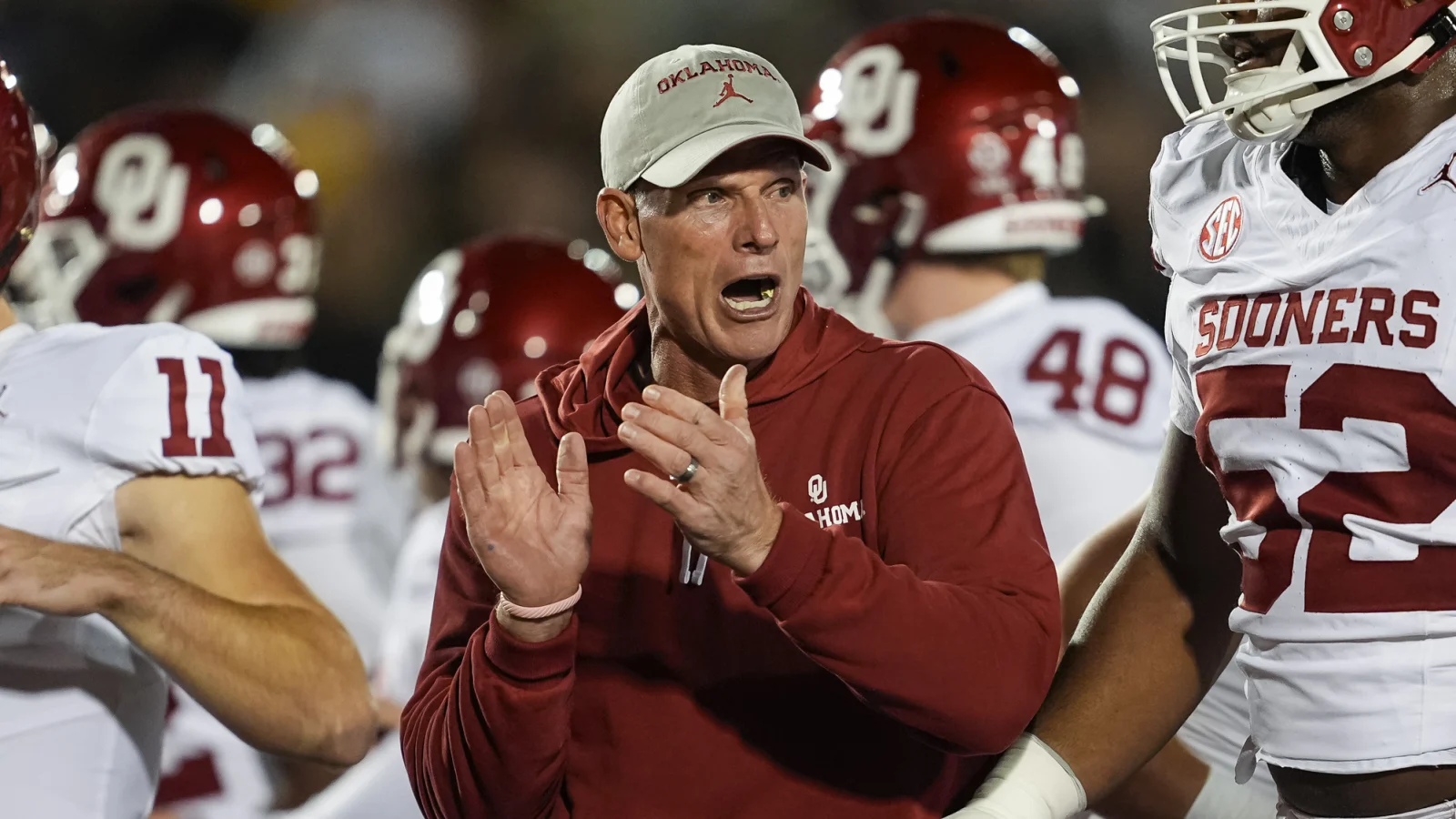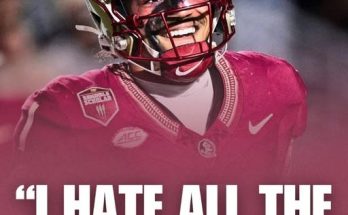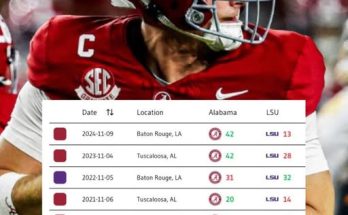Oklahoma State Spring Game Returns While OU Sooners Become ‘Poverty Program’
As college football continues to evolve, major changes are taking place in the Big 12 conference, with Oklahoma State reviving its iconic spring game while the Oklahoma Sooners are facing increasing criticism over their program’s recent performance. The contrasting fortunes of these two programs have sparked plenty of discussion, especially in the wake of Oklahoma’s struggles and Oklahoma State’s resurgence. For Sooners fans, the narrative of their team potentially slipping into a “poverty program” status has become a hot topic, especially when compared to their in-state rival’s return to prominence.
Oklahoma State’s Spring Game Revival: A Symbol of Renewed Hope
Oklahoma State University (OSU) has made headlines this spring with the return of their spring game, a beloved tradition that has always allowed fans to get an early glimpse at the team’s development heading into the next season. The spring game is an opportunity for fans to see both returning players and new recruits as they battle it out on the field in a highly competitive scrimmage format. The revival of this event signals a sense of optimism for the Cowboys program as it reasserts itself as a competitive force in the Big 12.
After a few years of reduced fan engagement and inconsistent performances, the Cowboys are eager to showcase their progress under head coach Mike Gundy. Known for his ability to develop players and consistently produce solid seasons, Gundy’s leadership has revitalized Oklahoma State football. The return of the spring game is a way to connect with the community, re-energize the fanbase, and build excitement around a program on the rise.
Under Gundy, Oklahoma State has always been a team that competes in the upper tier of the Big 12, regularly contending for bowl games and conference titles. The resurgence of the spring game offers fans a chance to experience firsthand the culture of growth, competition, and development that Gundy has fostered in Stillwater. This move aligns with the program’s long-term goals of returning to championship contention and re-establishing itself as a top-tier football program in the Big 12.
Oklahoma Sooners: Facing Struggles and Criticism
On the other side of the state, the Oklahoma Sooners have found themselves under scrutiny. Once a perennial powerhouse in college football, the Sooners are now facing criticism from fans, analysts, and rival programs, with many questioning whether the team is heading in the wrong direction. The whispers of the Sooners becoming a “poverty program” have gained traction, especially after a series of disappointing seasons that have left fans wondering if Oklahoma has lost its edge.
The departure of former head coach Lincoln Riley to USC in 2021 marked a significant turning point for the program. Since Riley’s exit, Oklahoma has struggled to regain its dominant form, and under new head coach Brent Venables, the team has faced challenges in rebuilding its defense and overall team cohesion. While Venables is still in the early stages of his tenure, the road to reclaiming Oklahoma’s status as a powerhouse has proven to be more difficult than many had anticipated.
Oklahoma’s struggles have been especially glaring in comparison to their historical success. The Sooners have always been a team associated with high-powered offenses and strong defensive units, consistently contending for national championships. However, recent performances on the field have seen the team fall short of expectations. Recruiting has also become an area of concern, as some of Oklahoma’s top prospects have turned their attention to other programs, leaving fans questioning whether the Sooners are truly on the right path.
The “Poverty Program” Narrative: A Stark Contrast
The term “poverty program” is being used by some critics to describe Oklahoma’s current predicament, suggesting that the Sooners are struggling to maintain their elite status and are in danger of falling into mediocrity. In contrast to Oklahoma State’s optimism and their return to competitive form, the Sooners’ fall from grace is becoming more apparent with each passing season.
At one point, Oklahoma was seen as one of the most prestigious programs in college football, consistently attracting top recruits and boasting a rich history of national championships and conference titles. The transition from a powerhouse to a program that is fighting to remain relevant is difficult for many fans to accept, and the “poverty program” label has gained traction in discussions about the program’s current trajectory.
There are several factors contributing to this narrative:
- Inconsistent Play on the Field: Oklahoma has struggled to maintain its level of play on the field, particularly in key moments of big games. The defense, which has traditionally been a weak point for the Sooners, has failed to improve under Venables as expected. The offense, though still potent, has not been able to carry the team in the way it once did.
- Recruiting Struggles: Once a powerhouse in terms of attracting high school talent, Oklahoma has seen its recruiting efforts slip in recent years. With the growing competition from other programs in the Big 12 and the rise of new powerhouses in college football, the Sooners have found themselves competing for recruits in a much more crowded and competitive environment. The loss of key recruits to other programs, including in-state rivals, has raised doubts about the program’s ability to compete at the highest level.
- Coaching Uncertainty: While Brent Venables has a successful track record as a defensive coordinator, his ability to transition to a head coaching role at Oklahoma has been questioned. The Sooners’ struggles under his leadership have raised doubts about his long-term future with the program, and the question of whether he is the right person to lead Oklahoma back to national prominence remains unanswered.
- Rivalry with Texas and SEC Transition: As Oklahoma prepares to make the jump to the SEC, the competitive landscape is set to change drastically. The Sooners’ move to the SEC has sparked concern among fans and analysts who worry that the team may struggle to compete with the powerhouses of the SEC. This uncertainty surrounding the transition, combined with Oklahoma’s recent struggles, has contributed to the perception of the program as a shell of its former self.
A Rivalry at the Crossroads
The situation between Oklahoma and Oklahoma State could not be more contrasting. While the Sooners find themselves at a crossroads, unsure of their future and struggling to regain their dominant position, Oklahoma State is on the rise, energizing its fanbase with the revival of the spring game and looking ahead to a bright future under Mike Gundy.
As both teams look to shape their futures, the rivalry between the two programs will become even more intriguing. Oklahoma State, with its momentum and revitalized energy, is positioning itself as a program ready to challenge for Big 12 titles and compete at a high level. Meanwhile, the Sooners will need to prove that their past success was not just a fluke and that they can regain their footing after a difficult period.
For Oklahoma, the road ahead is uncertain. The challenges of rebuilding and re-establishing their position as a college football powerhouse are daunting. Meanwhile, Oklahoma State is seizing the opportunity to take the next step and reassert its relevance on the national stage. Both teams are at a pivotal moment in their history, and their futures are sure to provide plenty of drama in the years to come.
A Tale of Two Programs
While Oklahoma State is enjoying a resurgence with the return of its spring game and a renewed sense of optimism, Oklahoma is grappling with its identity and facing growing concerns over its ability to maintain its elite status. As the Sooners attempt to navigate a period of transition and rebuild under Brent Venables, they will need to prove that they can still compete with the best programs in college football. Meanwhile, Oklahoma State has a chance to continue its upward trajectory and solidify its place as a top contender in the Big 12. The rivalry between these two programs has never been more compelling, and the stakes have never been higher.



